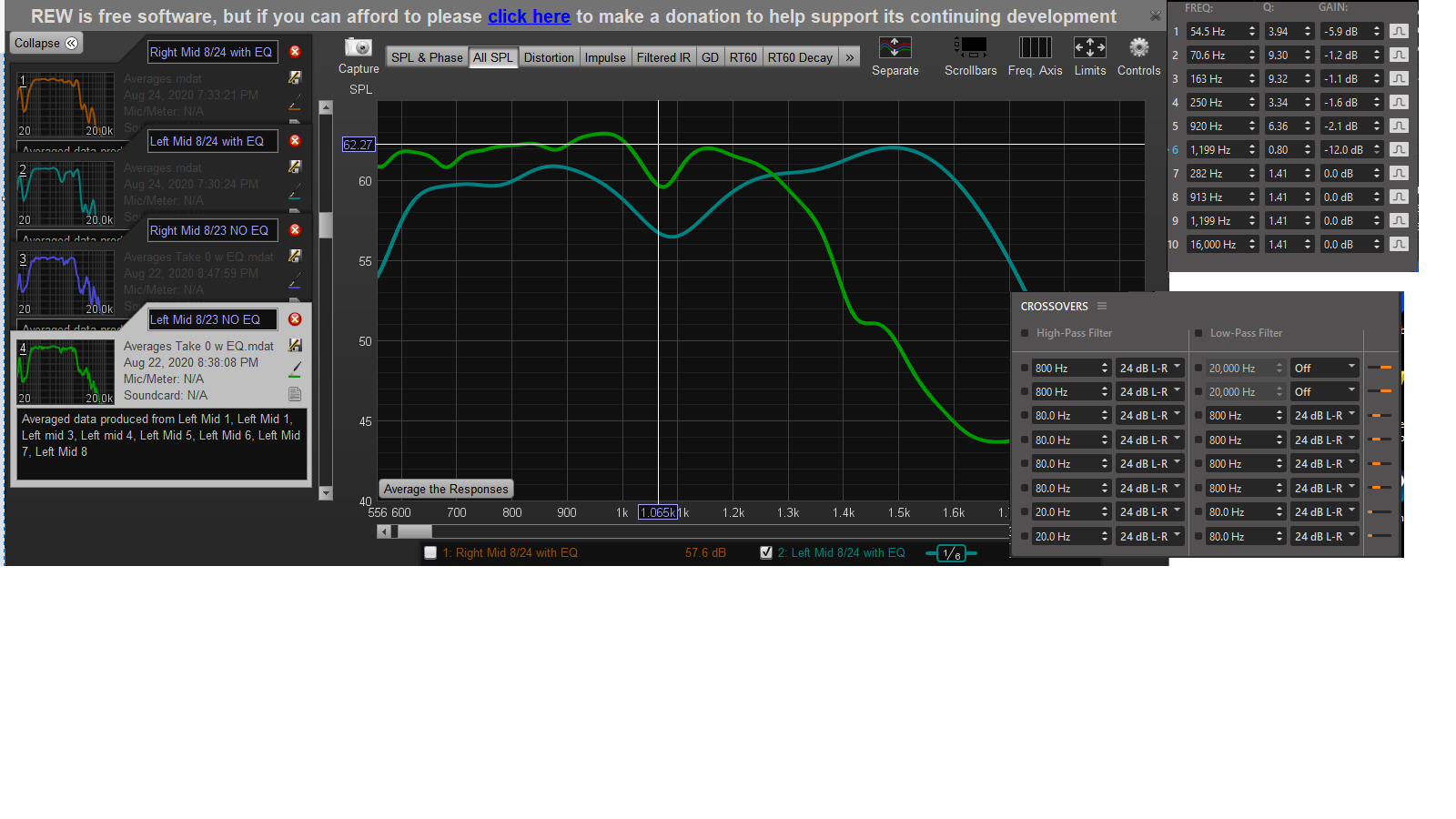
Originally Posted by
Justin Zazzi

Was that aimed at you instead? What's going on!? lol
The behavior of an audio system should be linear, meaning it behaves the same at low volume and high volume. This is certainly true for DSPs and amplifiers and other electronics unless you're pushing them *way* too hard. This is also true for speakers at medium and low and "very low" volumes. So I doubt your system would behave different between medium, low, and very low volumes.
It is more likely the very low volume measurements were corrupted by ambient noise or some other non-speaker-thing that is usually quiet enough to not matter when you're measuring a medium volume levels.
Unless you're using part of your factory radio system? Some factory radios have a crossover frequency shifting as volume increases to protect speakers from the lowest frequencies as you start to hammer on it. This is a really neat feature when you have lots of design constraints and cannot use the speaker you want, so you use the speaker you have in the best way you can at each volume level.
I think what I'm saying is if you're really seeing this behavior, it's not on accident because normal DSPs don't work that way. It takes a lot of effort to setup this kind of feature on purpose. You can very easily check for this behavior by taking multiple measurements as you slowly increase the volume on your radio a couple clicks at a time then look at all the measurements on the same screen at the same time.






 Reply With Quote
Reply With Quote



